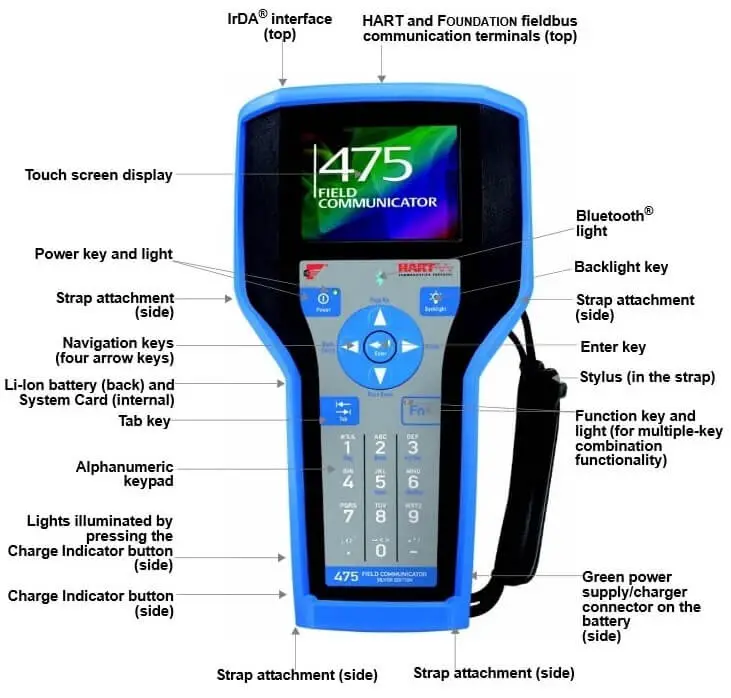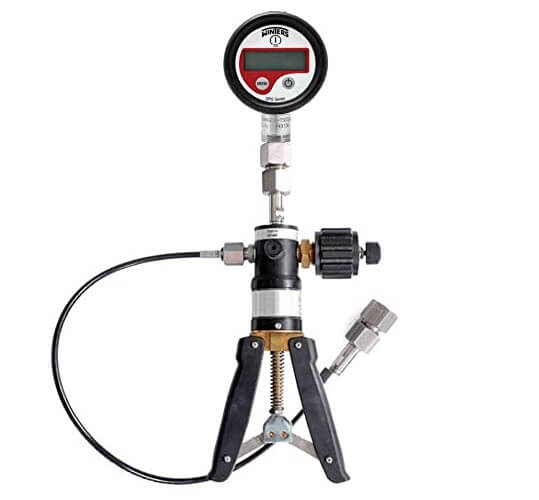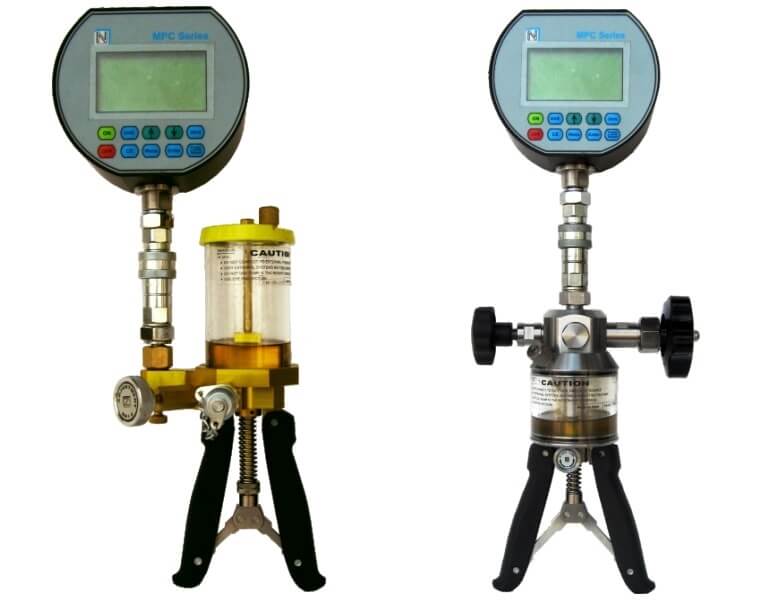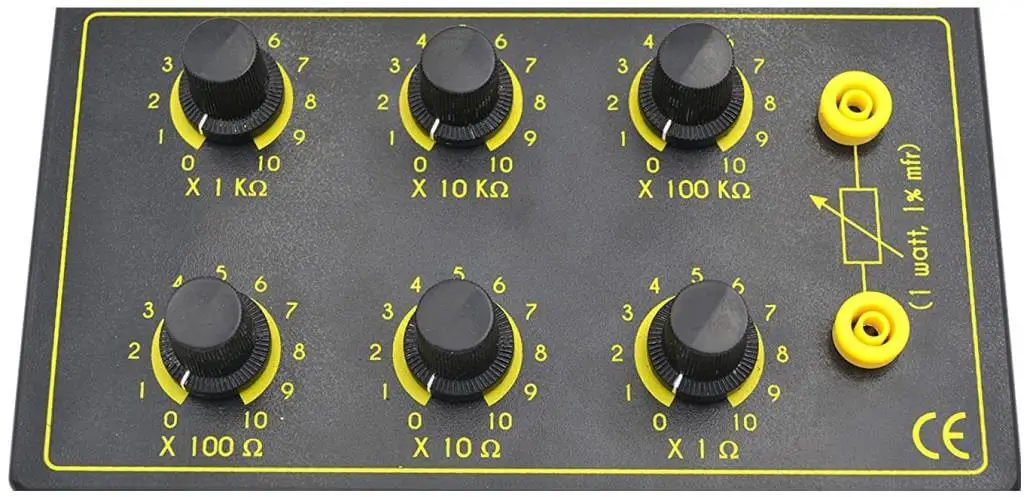The following are the tools often used by Instrument Technician or Engineer for solving day to day problems in the field.
Multimeter
A multimeter or a multitester is also known as a VOM (volt-ohm-milliammeter), is an electronic measuring instrument that integrates several measurement tasks in one unit. A particular multimeter can measure voltage, current, and resistance.
Multimeters are two types
- Analog multimeters.
- Digital multimeter.

Contemporary multimeters can measure many values. The most common are:
- Voltage, alternating and direct, in volts.
- Current, alternating and direct, in amperes.
- Resistance, in ohms.
- Capacitor, in farads.
- The frequency in Hz.
- Temperature Celsius or Fahrenheit
Download: Free Instrumentation Course
HART Communicator
HART is an acronym for highway addressable remote transducer, a two-way digital communication interface, and also a protocol.
The HART communicator is a secondary MASTER device that enables the technician in the field to monitor the process parameter value and take controllable action if needed.

HART communicators are powerful tools for communicating with process instruments.
HART communicators are ideal for processes that need monitoring or calibration even those instruments are located in a hazardous atmosphere.
A HART Communicator is used to communicate with the field instruments or devices that are HART Compatible. The Communicator looks something like an enlarged Multimeter which you can hang around your neck.
When you connect your communicator, you can analyze the instruments’ output current, input voltage, and diagnostics. Some HART communicators also show the trend of the output signal from the transmitter. With it, one can also hot-calibrate the instrument in the field with the actual process running and also change the ranges for which it is currently running.
Signal Calibrators
mA Loop Calibrators
mA loop calibrator is a cost-effective, economical and user-friendly calibration tool for measuring and sourcing mA signals in a loop. It is specifically designed for 2-wire transmitter loops such as pressure, flow, temperature, pH with 4 to 20 mA signals. Measure and source current to 24 mA and measure voltage max to 45 VDC.
A current loop can also be used to control a valve positioner or other actuator.
- Source, Measure, Simulate, Read all 4-20 mA Process Loop activities.
- Check 4 and 20 mA Span Limits.
- One-Handed Operation with Hands-Free Stepping/Ramping.
Thermocouple calibrators:
- Measurement & Simulation of various types of Thermocouple types like R, S, B, E, K, J, T & N.
- Selectable Temperature Output Readings in °C or °F.
RTD Calibrator:
RTD Calibrator with the capability to Measure & Simulate Resistance & RTD Readings.
Multifunction Process Calibrator:

Image Credits: NAGMAN
Multi-Function calibrator is available with the capability to Measure & Simulate DC Voltages, DC Current, Frequency, Resistance, and Thermocouples & RTD
Pressure Calibrators:
Vacuum and Pressure Calibrator:

Image Credits: GE Druck
Pressure calibrators or Hand pumps provide a method of generating pressure for calibrating gauges, sensors, transmitters, transducers, and other pressure instruments in the field.
The pressure generated by the pump is used as a comparison between the unit under test and a reference gauge of known accuracy.
Hand Pumps
Hand Operated Vacuum and Pressure Pump

Hydraulic Hand Pump

Useful for calibration of pressure transmitters in the field by a technician.
- Pressure pneumatic hand pump.
- Vacuum & Pressure pneumatic hand pump: It is possible for fine-tuning of pressure delivered with every stroke.
- Hydraulic hand pump: By using a Hydraulic pump, one can reach high levels of pressure with little effort.
Decade Resistance Box
It is a type of test equipment that can be used to substitute the interchanging of different values resistances with one variable output.

Image Credits: Eisco
In the resistance box, the variable resistor is fixed inside the box. They are arranged in such a way that the value of resistance varies at every step. The box consists of the rotary selector switch.
The variable resistance quantities are obtained by rotating the selector switches. The key plug is also used for selecting the resistances but rotary switches are more suitable. Hence rotary switches are mostly used in the decade resistance boxes.
Consider the example of the normal decade resistance box. The arrangement of the rotary switches in a decade resistance box is shown below.
- A range of Switch one – 1 to 10 ohms
- A range of switch two – 10 – 100 ohms
- A range of switch three– 100 – 1000ohms.
- A range of switch four – 100 ohms and above.
The resistance box contains more than one rotary selector switch. The resistance of each of the selector switches varies from few ohms onwards.
Any tools missed in the list? Share with us through below comments section.
